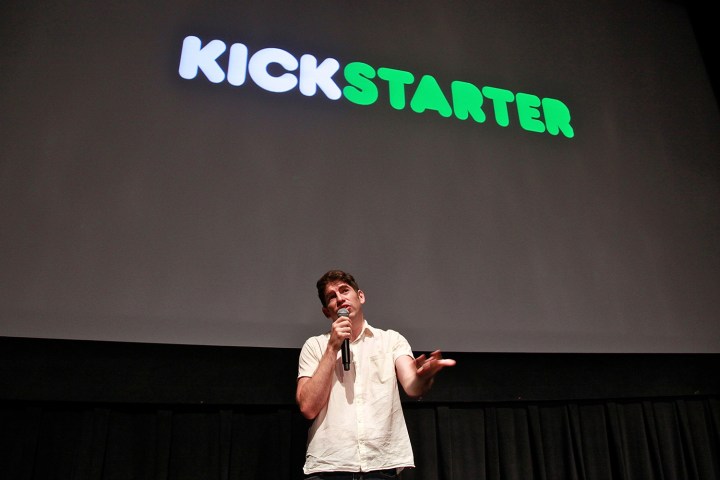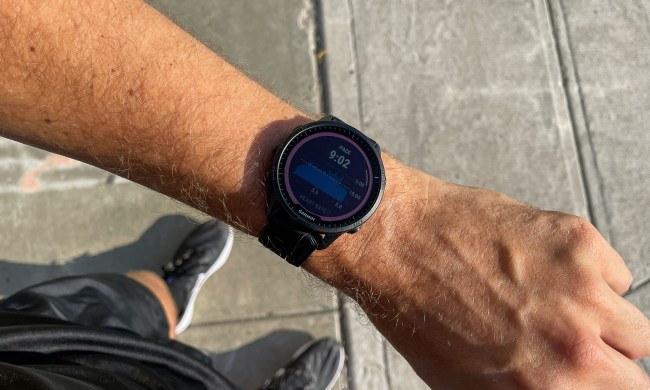
They’re three very different pieces of hardware, but according to some of the creators, each product had a few hiccups in common. While crowdfunding fails get a lot of attention, even products that eventually make their way into backers’ hands often take longer than expected to arrive. Both Indiegogo and Kickstarter say they aim to ensure those giving money get satisfactory outcomes, but due to the nature of the business, things don’t always turn out that way.
The first thing backers should know about Kickstarter and Indiegogo is how they handle manufactured products, which is the focus of this article (as opposed to art, film, and other such projects). While the Kickstarter review process requires creators to show a working prototype, Indiegogo lets people launch products that are in the concept phase. In September, the platform made a change that requires projects to list what stage it’s in: concept, prototype, manufacturing, or shipping. Before that, entrepreneurs could submit a dream, a video, and some renderings without explaining that they didn’t really have any idea if their “Flamdoozler” would work. Sometimes, even if a campaign has a convincing prototype, it doesn’t mean it’s not a scam.
Don’t Read the comments
Backers often feel they’ve been taken for a ride when outcomes don’t meet expectations. If a campaign promises to ship in April 2016, they’ll likely be given some leeway, but backers will definitely be looking for answers come May of the next year. (You can watch the comments go from excitement to impatience to name-calling with a quick scroll.)
The Drumi foot-powered washer launched an Indiegogo campaign in November of 2015, with an expected ship date of July 2016. By December of 2015, Yirego, the company behind the electricity-free device, had already made some design updates. It’s gone through version after version (seven, according to the company), and the expected ship date came and went. Once Yirego finalized the design, it ran into other issues.

“No manufacturer has had any prior experience making a product like Drumi because it is so new and different,” Petal Wang of Yirego told Digital Trends in an email. “Our engineers worked around the clock with them to come up with different solutions to concur [sic] the technical challenges and figure out the specifications of the hundreds of unique parts that require their own custom build mold or tool.”
She sent an email to backers in late September saying the Drumi is finally in production but without an exact ship date.
“We definitely push creators to communicate often.”
The last update on the Drumi Indiegogo page is from February 2017. In September, Indiegogo made it a requirement that campaigners post monthly updates. With that mandate, it seems like the platform is pushing creators to be up front about everything. It’s unlikely there will be new features to announce every month, but there are likely to be a good deal of problems and setbacks.
“We definitely push creators to communicate often,” Julio Terra, the director of Kickstarter’s Technology and Design Outreach program, told Digital Trends. “As you can imagine, our support team gets tons of support requests from backers of various products.”
Campaigners should share the good and the bad with backers, he said. Often the people creating the products are part of very small teams, and it’s common for backers’ comments to go unanswered. Wang of Yirego admitted that she has been focused on the product and is “a little behind in providing updates to our customer and subscribers.”
Where’s my trash can?
Some creators seem to prefer emailing updates to backers as opposed to posting them on the crowdfunding sites. This leaves a lot of backers frustrated when they don’t seem to make it onto these email lists. That was the case with one backer who contacted me about the Bruno Smartcan. The garbage can has built-in suction, and the idea is you sweep debris toward the Bruno, eliminating the need for a dust pan. Bruno launched on Kickstarter in April 2015 and reached its funding goal with shipping expected to start in October of the same year. Before the promised ship date, however, Poubelle, the company behind Bruno, also launched another fundraiser for the Smartcan on Indiegogo.

The company did not meet its crowdfunding goal there, but backers who did give money were told to expect their cans in February 2016. (Kickstarter’s rules won’t allow a creator to start a second project or get a second round of funding for the same project if they haven’t delivered to their first backers, which is why they also launched on Indiegogo.) In May of this year, Bruno creator Jim Howard said the company would announce a new manufacturer in the coming weeks and start shipping this fall. In August, Howard sent another email saying they would be signing another manufacturing contract in two weeks and would update on Kickstarter when that happened. The company’s last Kickstarter post is from May – nothing since. The company is still taking pre-orders on its site, and now promises that the item will ship in December. That doesn’t seem to satisfy backers, though.
Your “website now says preorders expected delivery December 2017,” wrote Ryan Easton on Indiegogo’s website on August 23. “What does that mean for the Kickstarter backers? I am going to be shocked if retail preorders ship at the same time as ours… wait no I won’t because you have not been updating the user base with actual time lines or progress reports.”
Help, please
Both Indiegogo and Kickstarter are trying to combat manufacturing issues in a few ways. In May, Kickstarter announced Hardware Studio, its partnerships with electronic components distributor Avnet and Dragon Innovation, which develops manufacturing plans. The Hardware Studio Toolkit has webinars, tutorials, and case studies to help creators learn from past successes. If manufacturers are at a fairly advanced stage in the development process, creators can apply to work with engineers from Avnet and Dragon to get guidance on issues they’re having. The two companies each offer something different, Terra said. Avnet has insight into the hardware side and can help a campaigner avoid choosing a chip that’s about to be discontinued or is low on stock at the moment.
Even big-name campaigners can run into trouble.
“All of a sudden you might be waiting six months just to receive delivery of a component that ends up holding up the entire manufacturing progress,” Terra said. “These are all things that first-time creators have a real struggle with.”
Indiegogo has similar partners, like electronics company Arrow, IBM for software solutions, and Riverwood Solutions for manufacturing consultations. Brookstone can also get involved with products all the way through selling them at their stores. Indiegogo tends to invite creators whose products are at all different levels of production, including those are that are ready to ship. It also attracts big companies that want to try unique, untested ideas. It’s where GE Appliances’ FirstBuild successfully raised money for its Paragon induction cooktop and Opal nugget ice maker.
Sadly FirstBuild’s Prisma cold-brew coffee maker fell just short of its goal, which proves that even big-name campaigners can run into trouble. Westinghouse went to Indiegogo to launch its Nucli smart lock. A sort of doorbell-lock combo you can open with your fingerprint, it certainly seemed like an ambitious project when it debuted in September 2015. Considering it was slated for delivery just three months later and Westinghouse has experience manufacturing locks, it seemed like a safe campaign to back. It’s been almost two years since the last campaign update. I reached out to Westinghouse several times and didn’t hear back until I spoke with Indiegogo. At the end of September, Westinghouse CEO Trey Mosier sent the following email to backers (and me):
“We appreciate your support and feedback regarding the NUCLI development. The team is committed to moving this project forward with the development of a reliable product. At this point, NUCLI does not yet meet our quality expectations. We will continue to work towards the goal of developing a product that meets our standards and will provide you updates as we have them. Thank you for your patience.”
There are now more than 1,000 comments on Nucli’s Indiegogo page, with most of the most recent ones expressing frustration with the lack of updates and availability of the product.
“The Westinghouse name is what made me contribute to this project,” wrote Brian Hilbern a few weeks ago. “Their name is still associated with this product so I hope they will be willing to do something about it.”
1,000-percent funded
While both crowdfunding platforms are working to improve the success rate, it doesn’t seem like they’ll ever be foolproof. With innovation comes risk. You’re not buying a product, you’re backing an idea, is the crowdfunder philosophy, but backers may not necessarily see it that way. Some people will never feel comfortable handing over their money for something they may never see, but there are ways to back projects that will have a higher chance of succeeding, Terra said. Look at the creators’ experience. Ask questions about where they are in terms of production, the process of creating the prototypes, and whether they’ve talked to factories about manufacturing. Terra said campaigners should be willing to answer.
“One of the things we do see is that products that embrace openness and are willing to talk about it, that’s a really strong sign of that creator’s preparedness,” he said. Yet even if the creator thinks they have their timeline nailed down, there are always what Terra calls wildcards.
Products can actually be too successful. If a device blows past its goal, selling 10,000 units instead of 1,000, the creator has some work to do. While they have more money, the factory they lined up may not be equipped for that volume. There may not be enough of a certain component to fulfill all the orders. It won’t necessarily lead to disaster, but you probably shouldn’t expect to get your product sooner just because the creator now has 10 times the money he or she asked for.
These sorts of issues are why I always include “backer beware” on any crowdfunding article I write. Most people with a brilliant idea and slick video probably aren’t out to scam you, but they may not know the ins and outs of manufacturing and production, either. If something does catch your eye on a crowdfunding site, do some research — but don’t necessarily dismiss it just because it’s not a guarantee. Backing something from prototype to finished product does offer something unique.
“Once this thing shows up, you know an awful lot about where it came from and all the sweat that went into it, versus something like an iPhone, which is just this magical device that drops from the sky,” said David Gallagher, Kickstarter’s director of communications.


